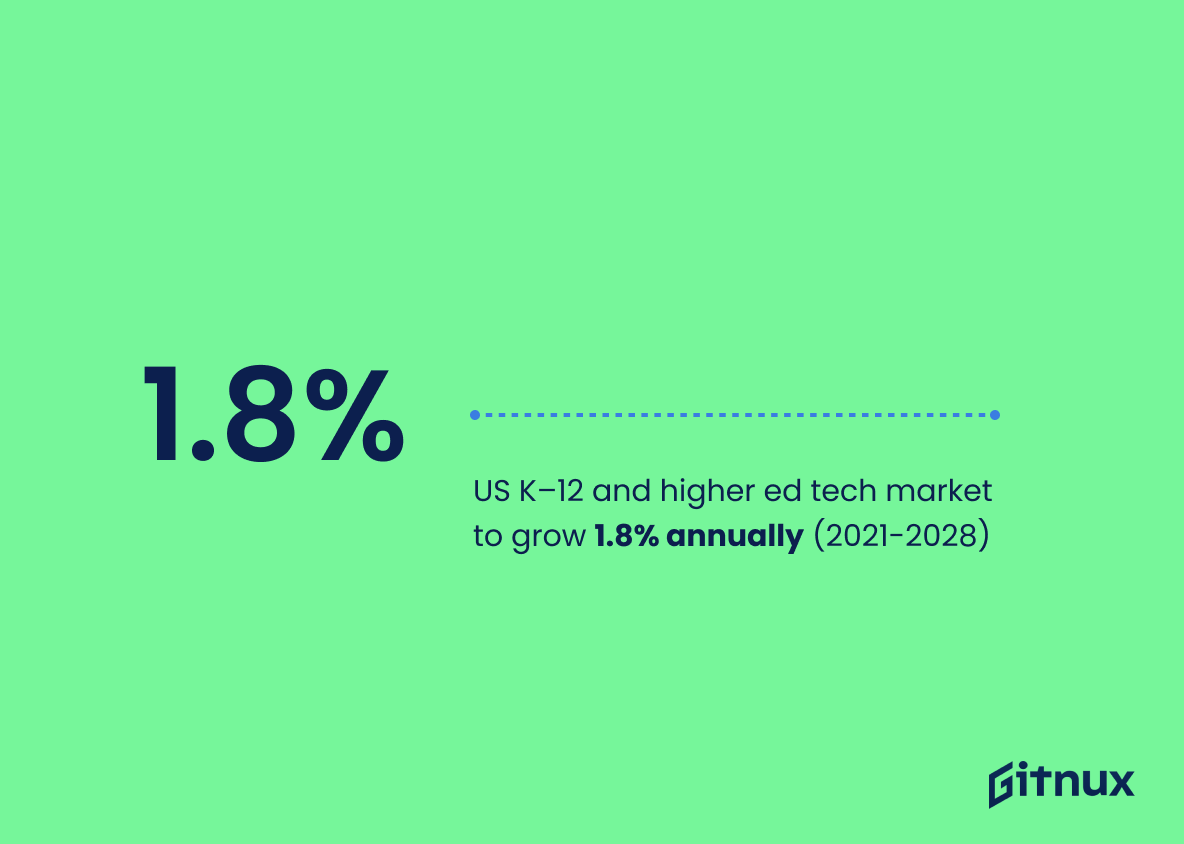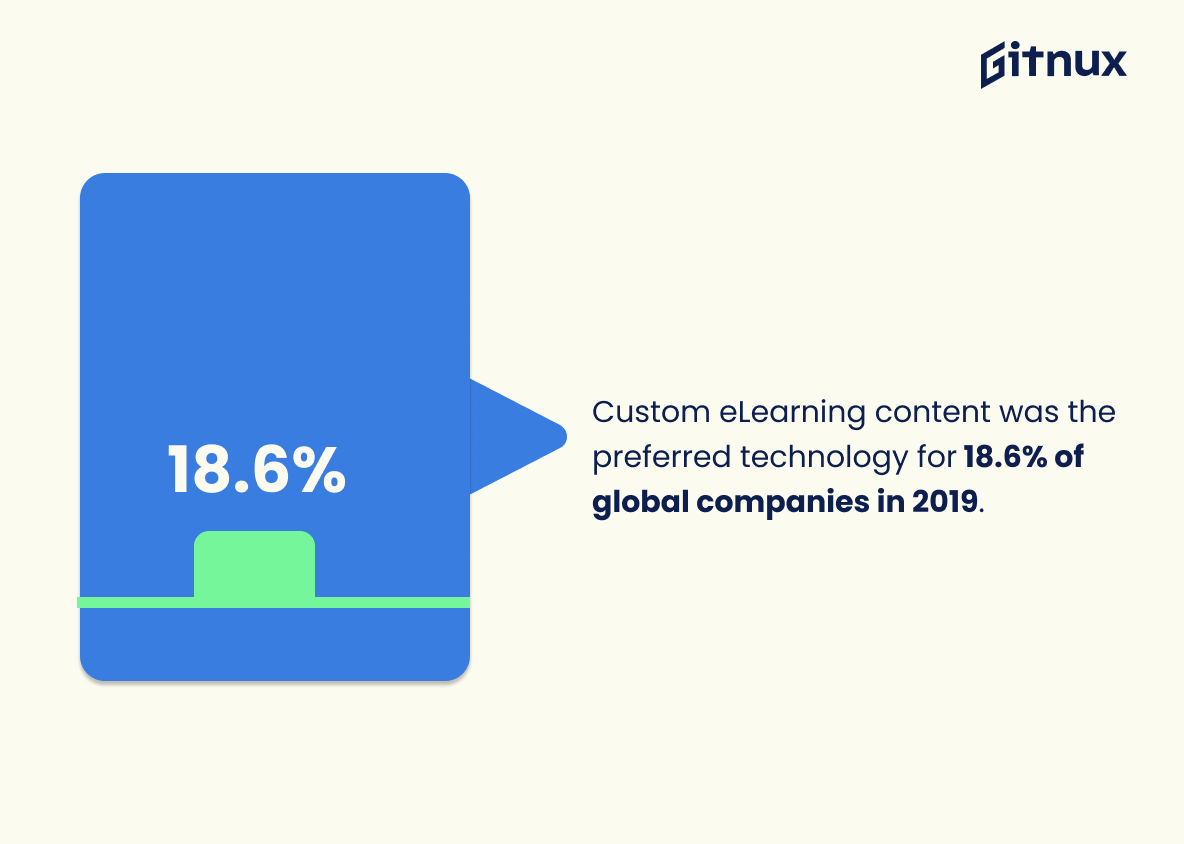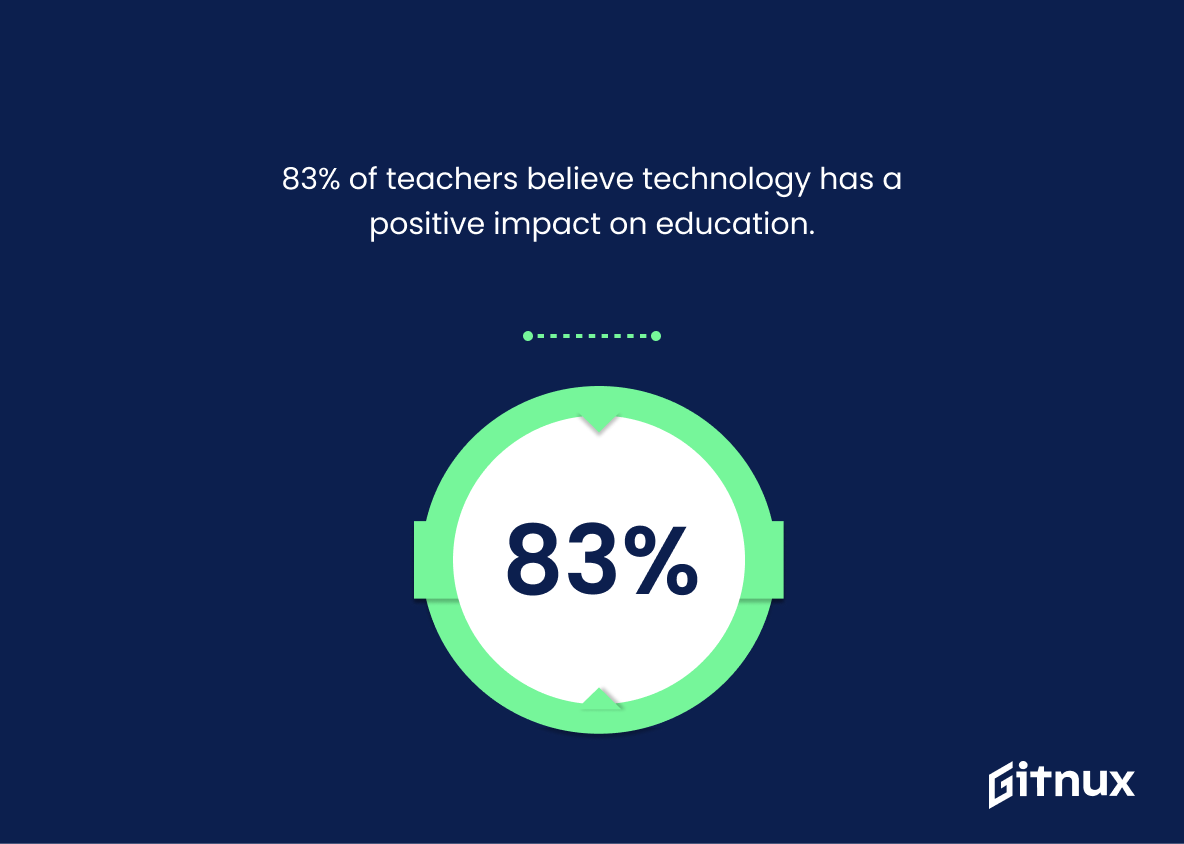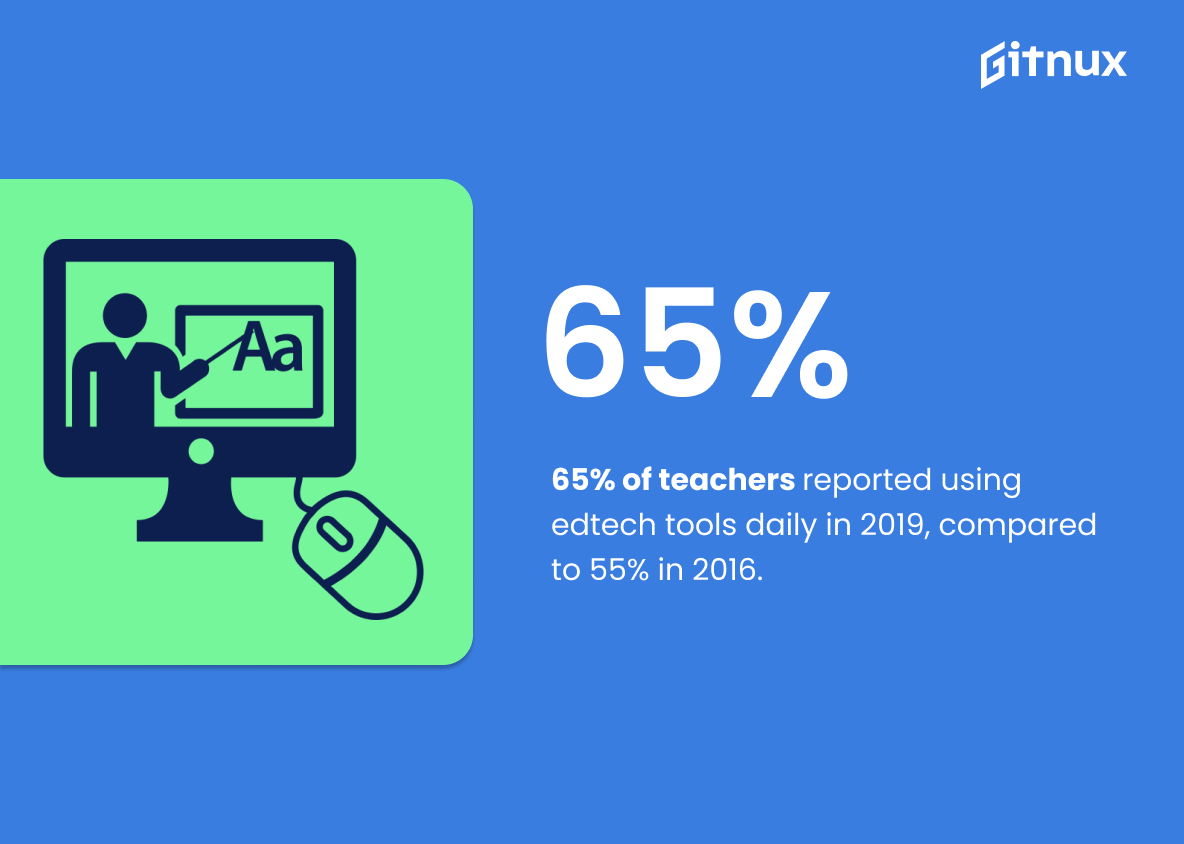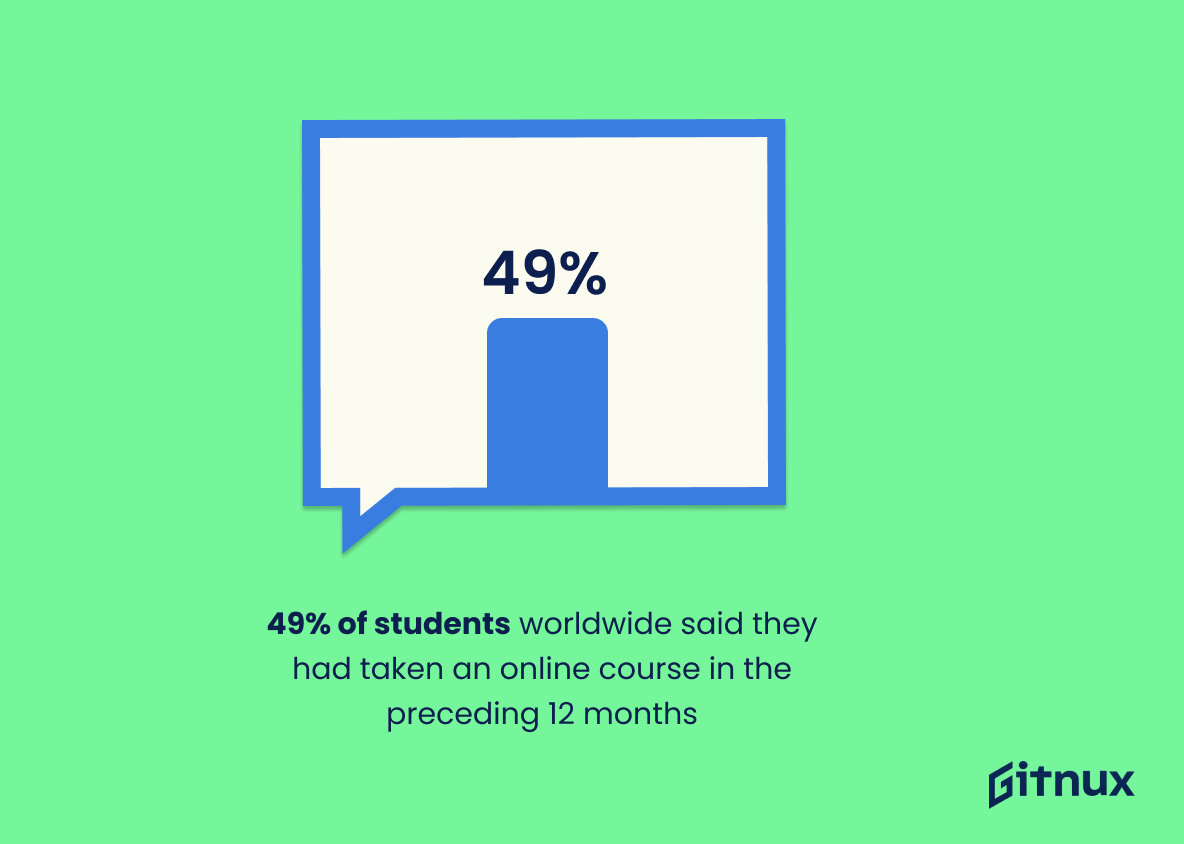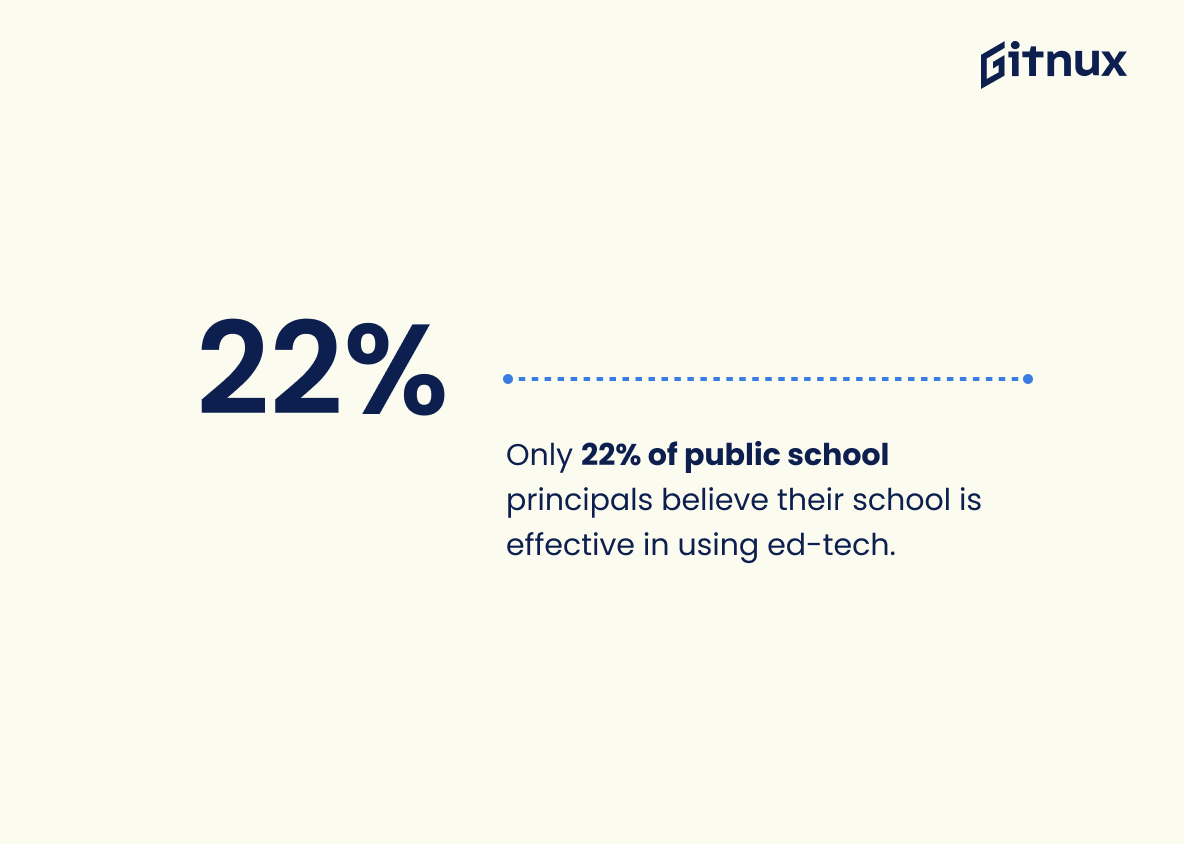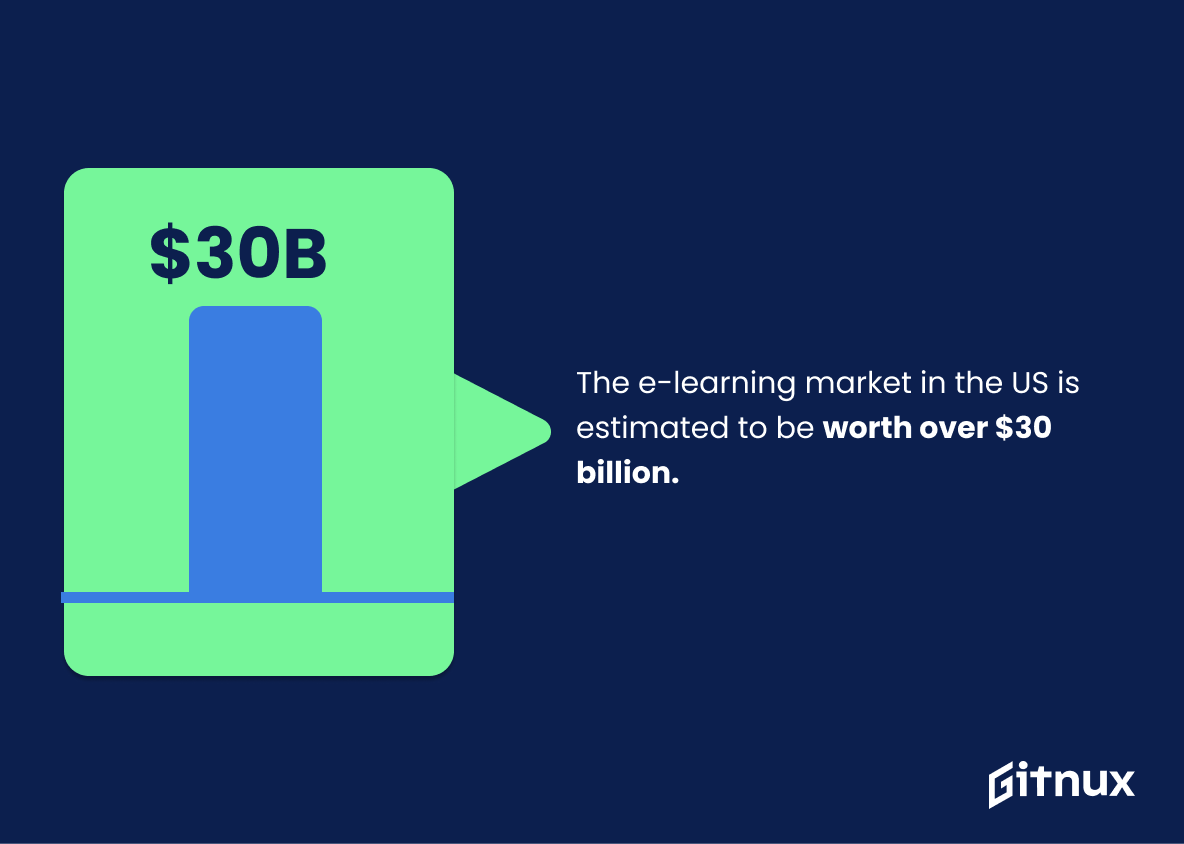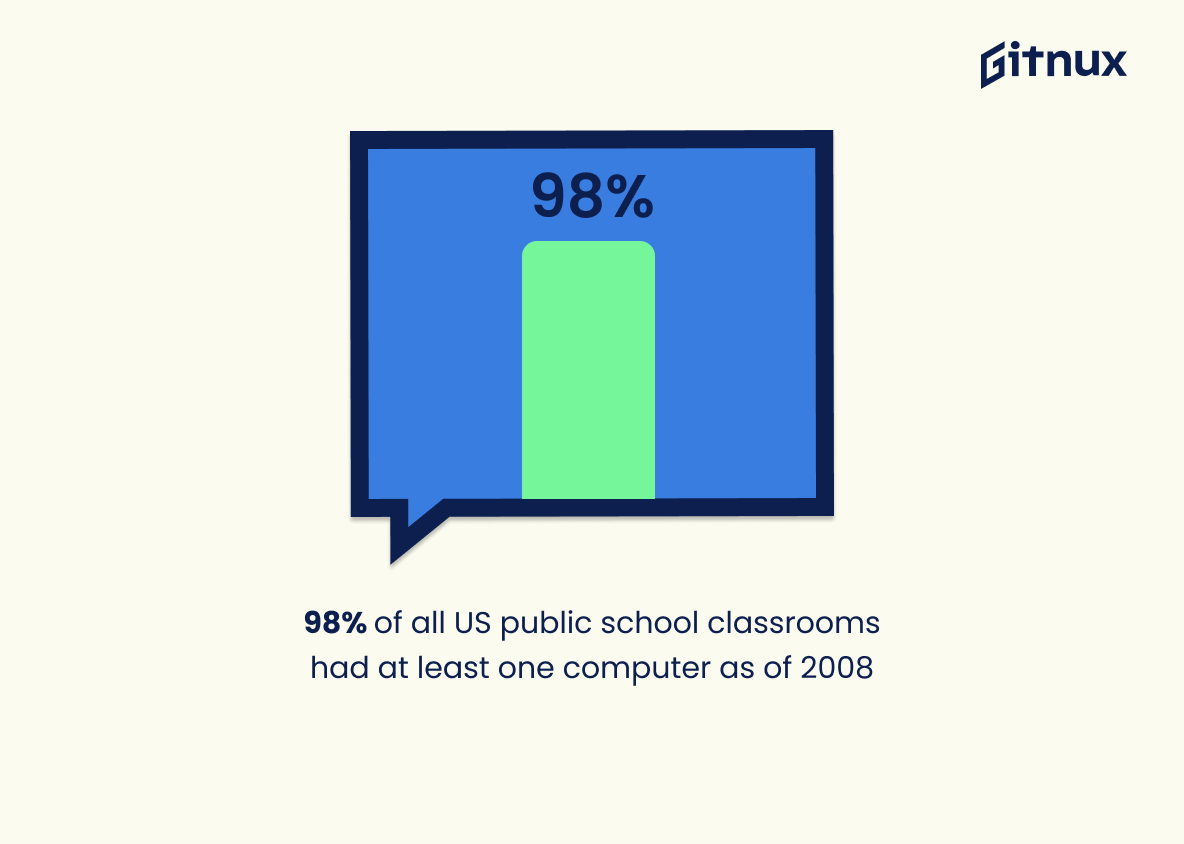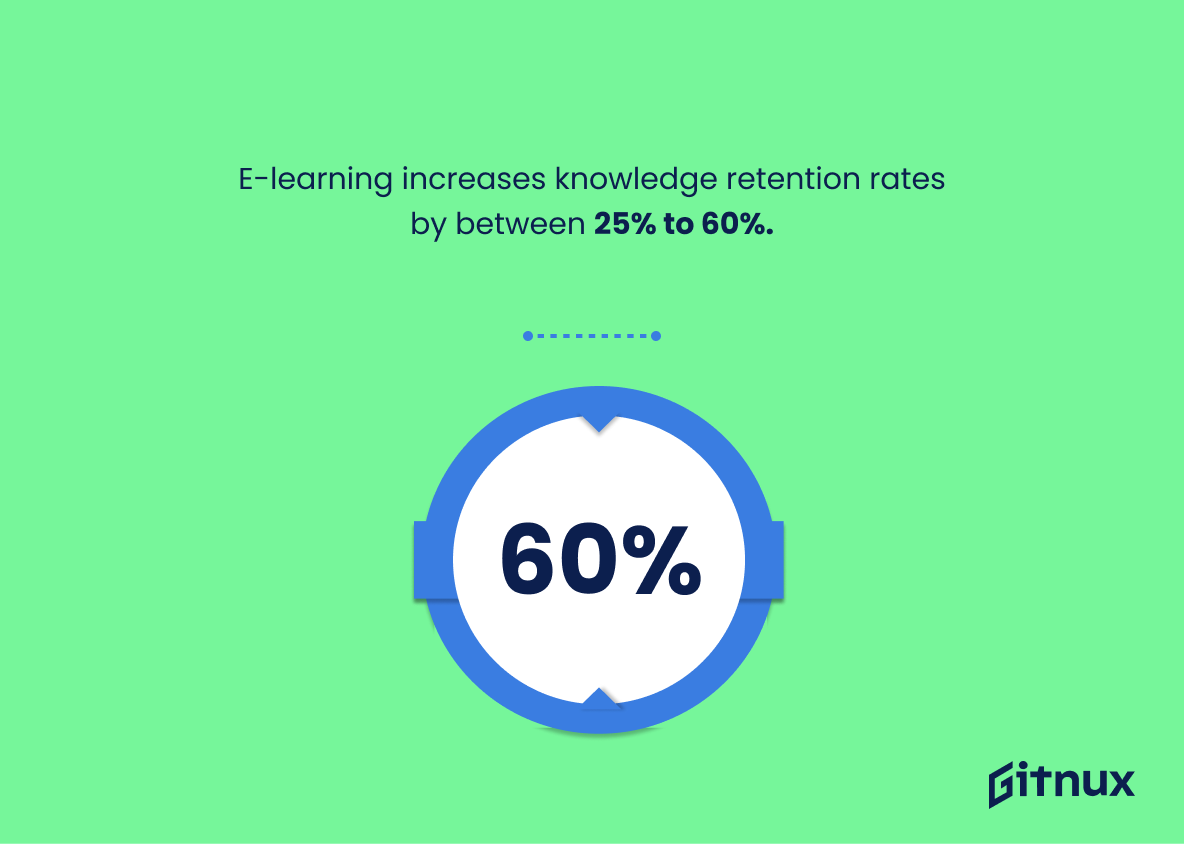In the ever-evolving sphere of education, the role of technology continues to expand, marking significant transformations in the way knowledge is disseminated. The Education Technology (EdTech) Industry has emerged as a powerful force, shaping the future of learning worldwide. This blog post will delve into the most recent and relevant statistical trends in this dynamic industry, offering you a comprehensive understanding of its current state and projected growth.
Whether you’re an educator, investor, or just tech-curious, these statistics will provide a valuable insight into the data-rich landscape of EdTech, its key role in modern education, and its potential to reframe the learning experience. Stay on the cutting edge of educational innovations by taking a deep dive into the compelling world of Education Technology Industry Statistics.
The Latest Education Technology Industry Statistics Unveiled
Global EdTech investments reached US$18.66 billion in 2019.
Highlighting that the global EdTech investment soared to a staggering US$18.66 billion in 2019 illuminates the meteoric rise and significance of the Education Technology Industry. Such a lofty figure underscores the increased recognition and investment in technology as a vital tool for enhancing the educational experience.
This massive investment influx significantly influences trends, augments advancements, and guides the future direction of the education sector. Unveiling this figure in the blog provides a clear testament to the world, affirming the merit and potential of EdTech, while setting a concrete measure for industry growth and development.
By 2025, the online education market is projected to reach $350 Billion globally.
Forecasting a global valuation of $350 billion for the online education market by 2025 draws attention as an attestment to the dynamic growth and immense potential held within the field of Education Technology. It’s a testament to the blend of technology and education reaching a new zenith, opening doors to innovative teaching methods, personalised learning and global connectivity.
Particularly significant for entrepreneurs, investors, and educators, this projection underlines the vast opportunities ripe for exploration and capitalization. It also showcases the inevitable need for the world to embrace digital learning tools, thus accelerating the educational paradigm shift towards global digital classrooms. Crucially, it reaffirms that education technology stands as a pivotal force in revolutionising the education sector in the modern era.
The education technology (ed tech) market for K–12 and higher education in the United States is expected to grow by 1.8% annually from 2021 to 2028.
Embarking on a journey through the world of Education Technology Industry statistics, one might stumble upon an intriguing forecast: the ed tech market for K–12 and higher education in the United States is projected to flourish at an annual growth rate of 1.8% from 2021 to 2028. This prediction packs a punch, becoming a beacon leading us to understand the future landscape of the industry.
This projection serves as a testament to the unwavering evolution and increasing value of ed tech. It cements the idea that technology in education is not merely a trendy blip on the radar but an enduring transformation, continuously poised to uplift the educational fabric of America through this decade.
Not only does this statistic spotlight the market’s promising growth trajectory, but it also underscores a prevailing shift in teaching methodologies, giving tangible shape to the abstract idea of innovation in education. This anticipated growth tells a tale of tomorrow – a narrative of integrating tech tools into traditional classrooms, making learning more engaging, personalized, and effective.
In a nutshell, the forecasted 1.8% annual growth rate arms education stakeholders with knowledge about the significant financial promise within the ed tech industry, marking it as a potentially profitable venture for both entrepreneurs and investors. Plus, it hints at the upcoming surge in demand for ed tech solutions, a valuable cue for educators and policymakers to ride this wave of educational change.
Custom eLearning content was the preferred technology for 18.6% of global companies in 2019.
Unveiling the curtain on the eLearning realm, the fascinating figure of 18.6% of global companies favoring custom eLearning content in 2019 offers a significant insight. This pulsating data point beautifully showcases the burgeoning inclination of worldwide corporations towards personalized learning solutions.
The heart of this number lies in its potential to shape the narrative around how companies are actively leveraging education technology to tailor rich, immersive learning experiences for their employees. Essentially, this statistic wields an interpretive power, serving as a key to understanding the cutting-edge digital trends that continue to revolutionize the landscape of corporate training and development.
83% of teachers believe technology has a positive impact on education.
In the vibrant landscape of the Education Technology Industry, this 83% endorsement from teachers upholds the value proposition of technological tools in enhancing education. It serves as a testament that adopting ed-tech tools isn’t merely a fad, but an evolving necessity recognized by educators – the heart and soul of the education process.
The robust number confirms that instead of fearing machines will replace them, educators themselves are being innovative, embracing technology for its potential to augment their teaching methods and enrich student learning experiences. Understanding this trend equips tech industry stakeholders with a compelling motivational force to develop more quality education tech solutions.
65% of teachers reported using edtech tools daily in 2019, compared to 55% in 2016.
In viewing the vibrant landscape of the education technology industry, one cannot overlook the ascension of edtech tool usage among teachers. With the upwards jump from 55% in 2016 to 65% in 2019, the growth becomes a significant testament to the expanding influence of technology within educational realms. It highlights a shifting trend amongst educators towards embracing edtech tools as an integral part of everyday instruction.
This upward trajectory has pivotal implications for the education technology industry, not only substantiating its increasing relevance and adoption but also bringing forth potential for its continued prominence in the future of education. This presents an encouraging narrative for developers and stakeholders and infuses the sector with undeniable dynamism and prospective growth.
49% of students worldwide said they had taken an online course in the preceding 12 months.
Painting a portrait of the global educational landscape, the fact that nearly half of all students globally declared an engagement with an online course within the past year dramatically underscores the pivotal role that education technology is playing. It highlights not only the pervasiveness of EdTech across the globe, but it also signals a definitive shift in the consumption of education – skewing away from traditional brick-and-mortar classrooms to virtual classrooms.
For stakeholders in the education sector, this powerful trend clarifies the springboard opportunity presented by the shifting dynamics. Educational software and tech platforms are fast becoming the de rigueur mediums for delivering course material, signaling a burgeoning market ripe for exploration and investment.
Only 22% of public school principals believe their school is effective in using ed-tech.
This particular nugget of data offers a significant pulse check on the ed-tech industry. Shining a light on an apparent disconnect, it uncovers a glaring reality – despite the rapid evolution and promotion of ed-tech tools, a worryingly low percentage of public school principals, who serve as key decision-makers in school affairs, have confidence in their school’s utilization of such resources.
In pinpointing the 22% figure, the statistic broadcasts a loud, clear message to both the education and technology sectors that there is a massive room for improvement in this field. It’s a call for increased investment in not just the technology itself, but also the training of educators to effectively incorporate these tools.
Furthermore, this statistic is an invitation to dig deeper into the issue – why is there such a notable gap in the belief of ed-tech efficacy? Is it due to limited accessibility, poor training, lack of funding, or perhaps a combination of these factors?
In short, this vital data point serves as a launching pad for a comprehensive exploration of the Education Technology industry, ultimately opening the door to a plethora of discussions on how to better meld educational goals with digital advances.
The e-learning market in the US is estimated to be worth over $30 billion.
Highlighting this sizable $30 billion valuation of the U.S. e-learning market showcases the stunning economic impact of the Education Technology industry. This figure, standing as a testament to the industry’s robust growth and acceptance, underlines the transformative influence such technologies are having on education.
When considering such a major market volume, it reveals a profound shift in the way knowledge is imparted and received, thereby emphasizing the importance of investment and focus in the industry’s progressive trends in the blog post. Moreover, it also suggests the potential and undiscovered opportunities in the Education Technology industry that can be harnessed for further growth and innovation.
By 2030, global spending on edtech is expected to reach $342 billion, according to a report from business-to-business (B2B) marketplace Expert Market.
Projecting into the future of the Education Technology (EdTech) industry, we find ourselves on the precipice of a financial boom. The first statistic that strikes notable attention: an anticipated explosion of global spending on EdTech that will escalate to an impressive $342 billion by 2030, as reported by Expert Market. This financial forecast not only speaks volumes about the scale and scope of the rapidly transforming EdTech industry but also elevates its prominence in the global economy.
This prospective surge in investment provides a vibrant picture of the rising importance accorded to technology in education. It also signifies the global recognition and acceptance of the manifold benefits that technology brings to the table within the realm of knowledge acquisition, skills enhancement, and interactive learning. Indeed, this staggering monetary value illuminates the escalating integration of technology in education, underlining how crucial investment in EdTech will be in shaping the future contours of global education.
In the narrative of Education Technology Industry Statistics, such a forecast secures a pivotal spot. It sets a robust tone for the ensuing discussion, it justifies the need to closely track the evolution of EdTech, and above all, it strengthens the agenda for innovation, research, and investment in this rising sphere of education.
Virtual Reality (VR) in education is predicted to be a $700 million industry by 2025.
Unveiling the projected growth of Virtual Reality (VR) in education to a staggering $700 million industry by 2025 serves as a potent testament to the imminent and seismic shifts in the education technology industry. This prediction not only captures the tremendous potential of VR as an educational tool, but also underscores the dynamic innovation and investment pouring into the sector.
It paints a picture of a not-so-distant future where virtual classrooms could replace traditional ones, thereby transforming the learning landscape and setting a new educational paradigm. Hence, this digital pivot clearly signifies the prominence of up-and-coming technologies in reshaping the contours of the education industry.
98% of all US public school classrooms had at least one computer as of 2008.
The power of this statistic lies in its testament to the foothold technology has managed to secure in US public schools as early as 2008. It underscores the swift integration of digital tools into the core structures of education, showcasing how classrooms have been transformed into hubs of innovative learning experiences.
This figure is a strong indication of the pre-existing, intensive engagement with technology in education, serving as an inspiring testament to the birth and growth of the EdTech industry. The statistic can also be perceived as a measure of the industry’s extensive reach and its capacity to revolutionize learning environments, a nod to the fact that technology has become an indispensable component of teaching and learning over the years.
The artificial intelligence (AI) in education market is predicted to grow at a CAGR of 47.77% from 2021 to 2026.
Projecting a fascinating panorama, the astoundingly high CAGR of 47.77% for AI in education from 2021 to 2026 illuminates the rapidly growing involvement and importance of AI in the educational field. It’s as though we’re witnessing the birth of a comet set to propel the EdTech industry into new dimensions of innovation, effectiveness, and profitability.
This transformative potential sends a strong wake-up call to industry players, educators, and policy-makers alike, underscoring the urgency to understand, adopt, and invest in AI-driven educational solutions. It underscores a pendulum swing towards digital learning, fuelled by continuous technological advancements and shaping an imminent reality where AI’s role in democratizing and personalizing education is more rule than exception. Thus, this projection doesn’t just measure potential growth; it quantifies the imminent future of education.
48% of edtech is used for conducting assessments.
Illuminating the landscape of the education technology industry, the statistic – 48% of edtech is employed for conducting assessments, underscores a pivotal trend. Moreover, it serves as a tangible proof of the industry’s prioritization of evaluation and feedback systems.
This shines a light on how integral assessments have become in the digital learning process, by not only sparking innovations in the way evaluations are conducted but also tailoring learning paths to the unique needs of every scholar. Therefore, in the panorama of edtech, this statistic offers an insightful glimpse into both present use and potential future directions.
E-learning increases knowledge retention rates by between 25% to 60%.
Highlighting the striking fact that e-learning increases knowledge retention rates by a whopping 25% to 60% creates a compelling case for the transformative power of digital education tools. In the fast-paced world of the Education Technology industry, such figures unearth the strengths of e-learning and its crucial role in enhancing the potency of learning outcomes.
It’s akin to holding a window up against a landscape burgeoning with potential, revealing a promising panorama where technology indeed elevates education. For education stakeholders, this statistic serves as a beacon, guiding them towards strategies designed for maximum impact on student performance and success.
In 2021, 53% of students worldwide reported needing more support in using digital learning tools effectively.
Underscoring the pulse of the current educational landscape, the cited statistic – ‘In 2021, 53% of students worldwide reported needing more support in using digital learning tools effectively’ – casts a spotlight on a critical area of focus for the EdTech industry. It emphatically outlines the reality of a pressing need for user-friendly educational technology, along with comprehensive support for students navigating these digital tools.
This illuminating piece of data not only addresses a significant pain-point in technology-led education, but also uncovers a tremendous opportunity for ed-tech firms to modify their offerings and pivot their growth strategy. Instilling broader tech proficiency among students could be the game-changer, giving a significant thrust to the industry’s overall development and penetration.
By 2030, India’s online education market is set to increase by 19.8% annually.
In the realm of Education Technology Industry Statistics, an intriguing forecast arises from the subcontinent of India—predicting a stunning 19.8% annual growth for their online education market by 2030. This forecast not only underscores the vast potential of an untapped market but also indicates a transformative shift towards digital learning platforms in a country boasting the world’s second-largest internet user base.
This burgeoning sector in India’s ed-tech landscape provides a lucrative opportunity for industry stakeholders globally, underscoring the importance of a strategic approach rooted in deep understanding of this market trend. Furthermore, it signals the transformational power of technology in reshaping traditional learning methodologies, which is central to the discourse on Education Technology Industry Statistics.
The use of mobile learning technologies in the workplace is expected to triple by 2020.
Indicating a seismic shift in the educational landscape, the aforementioned statistic projects a notable surge in the adoption of mobile learning technologies within the workspace by 2020. Given that it’s outlined for a threefold increase, it stands as a portrayal of a transformative trend that reshapes not just the way employees learn, but also alters the framework of corporate training and development.
In our rapidly digitizing world where access to information is at our fingertips, this dramatic increase underscores the growing relevance of on-demand and on-the-go learning. For the education technology industry, this can be seen as an open invitation, galvanizing tech industry players to innovate, create, and fine-tune their mobile learning solutions aligned with user needs.
Moreover, such a shift offers insights for investors and stakeholders in ed-tech. The ascending trajectory of mobile learning technology usage becomes an important point of reference for decision making, potentially identifying lucrative investment opportunities. Lastly, for the end-users themselves, this statistic paints an optimistic picture, hinting towards a future of learning that promises to be more flexible, convenient, and tailored to their evolving needs.
89% of edtech startups failed within the first five years of their inception in 2020.
The stark picture of the tumultuous landscape facing edtech startups comes into focus with the rather eye-opening statistic; 89% have met their end within the first five years of existence as of 2020. Undeniably, it’s a sobering reminder of the trials and tribulations inherent in pioneering in the realm of education technology.
Contrary to what one might think, this figure communicates much more than mere technological stumbling blocks. It underscores the disconnect between innovative concepts and viable, sustainable business execution. For a reader evaluating the health and future of the edtech industry, this statistic serves as a lighthouse, cautioning against the turbulence that potentially lies ahead.
Moreover, operating in a challenging industry like edtech requires overcoming a multitude of hurdles including, but not limited to, changing learning behaviors, reliable technology, and regulatory requirements. However, where there are challenges, there is also the enormous potential for reward. Hence, the statistic could serve as an impetus for aspiring entrepreneurs and established players in the industry to build resilient, innovative, and ground-breaking services.
Indeed, the 89% failure rate statistic, far from being solely a harbinger of gloom, brings to light the resilience and determination needed for success in the edtech industry. It becomes a key insight that encourages creativity, ingenuity, and most importantly, the willingness to take calculated risks in the face of potential failure.
In 2018, it was reported that around 63% of K-12 teachers use ed tech in the classroom each day.
Highlighting the figure that around 63% of K-12 teachers utilized education technology in their classrooms daily in 2018 is a shining beacon showing how widely adopted these tools are in the modern educational landscape. It showcases not just the prevalence, but the vital role that ed tech is playing in shaping the classrooms of today and tomorrow. For an industry that is continually evolving, this statistic is a testament to the growing confidence and reliance educators are placing in these tools—propelling the push towards a digital learning environment.
This significant adoption rate demonstrates a pivotal shift in teaching methodologies, heralding an era where education technology is no longer seen as a supplement but an essential component in the academic milieu. It shapes an optimistic narrative for the ed tech industry, indicating its solid foothold in schools and setting a positive trend for its future growth.
Conclusion
In light of the data examined, it is undeniable that the Education Technology Industry is on a considerable incline. The marriage of education and technology presents untapped potential, and the steady growth in investment signifies the faith stakeholders have in this union. As technology continues to evolve and the demand for more innovative educational strategies augments, the EdTech industry shows no signs of slowing down.
Albeit, it’s safe to assert that the role of technology in reshaping education globally is undeniably profound. The integration of technology into education is not just a trend, but a reality that signals the future of education – a future that is happening now.
References
0. – https://www.nces.ed.gov
1. – https://www.www.statista.com
2. – https://www.reports.valuates.com
3. – https://www.holoniq.com
4. – https://www.www.shiftelearning.com
5. – https://www.www.grandviewresearch.com
6. – https://www.www.researchandmarkets.com
7. – https://www.venturebeat.com
8. – https://www.www.rand.org
9. – https://www.www.marketsandmarkets.com
10. – https://www.www.prnewswire.com
11. – https://www.arpost.co
12. – https://www.edtechmagazine.com
13. – https://www.techprolonged.com
14. – https://www.www.holoniq.com
15. – https://www.www.chegg.org
16. – https://www.www.businesswire.com
17. – https://www.www.globenewswire.com
18. – https://www.www.edsurge.com


